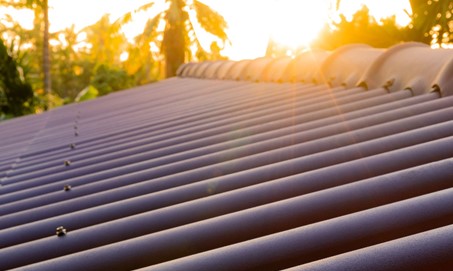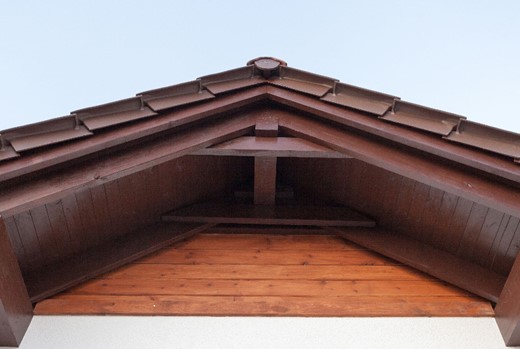Vincent Albert Gentilozzi is the Founder of Stormshield Roofing Company based out of Lansing, Michigan. In the following article, Vincent Albert Gentilozzi discusses the best materials to utilize on a low-sloped roof.
The turn of the mid-20th century saw low-slope (sometimes called low-pitched) roofing become the standard for homes across the country, replacing the previously revered Victorian-style. These new slope designs gave homeowners the ability to use all their structure’s space while reducing heating and cooling bills explains Vincent Albert Gentilozzi.
Despite the plethora of benefits, professionals like Vincent Albert Gentilozzi state that low-slope designs can affect water drainage and runoff, which is why choosing high quality, effective materials on a lower slope makes all the difference.
Water drains quickly and easily off the sides with high-pitch, but not as much for their low-pitch cousins. Using the proper materials to prevent water pooling on the low-slope is key.
So, for those looking to construct their own new home or remodel their current one should only choose the best materials on the market for their low-slope roofs to mitigate any drainage damage.
Vincent Gentilozzi on the Top 6 Materials
Built-Up Membranes
A built-up roof system, otherwise known as a BUR or a tar and gravel roof, uses alternating layers of bitumen and reinforcements (like felt paper) before finishing with a gravel layer.
Vincent Albert Gentilozzi says that this approach has been around for over 100 years and creates near-unmatchable insulation and protection. Experts say it’s a durable solution for a low-slope due to its large-sheet installation method for a continuous surface that effectively resists water.
Standing Seam Metal
Some homeowners and builders prefer standing seam metal roofing for aesthetic reasons according to Vincent Albert Gentilozzi. It appears flat in the center and boasts vertical ribs at the edges of the panels for an ultra-stylish ridge.
As far as metal material goes, it’s the most weather-tight system since it’s held together by concealed fasteners, negating the need for screw penetration like its corrugated cousin.
Vincent Albert Gentilozzi says that there are three types of standing seam panels. However, experts recommend the double-lock mechanically seamed system for a low-slope because this approach ensures maximum weather tightness, which is more prevalent for buildings constructed in areas experiencing extreme weather conditions.
Rolled Roofing
Rolled roofing, which many people know as asphalt roll, is an oil-based mineral-surfaced material available in huge rolls. Designers love the variety of styles, colors, and textures, experts appreciate the installation’s ease, and homeowners applaud its low-cost nature.
However, it isn’t as durable as asphalt shingles according to Vincent Albert Gentilozzi. While it’s a great temporary material for those looking to save money before finishing their home more favorably, it’s best left for garages and sheds with a low-pitch.
Single-Ply
A single-ply system involves a series of broad plastic membranes rolled over the roof’s surface and welded together. This approach boasts excellent durability and weather tightness.
Like standing seam metal, there are three main types of single-ply materials for homeowners to consider:
- Polyvinyl Chloride or PVC — It’s highly reflective, allowing residents in warm climates to reduce energy bills.
- Thermoplastic Polyolefin or TPO — Economically minded homeowners tend to choose TPO. Thus, it’s the most common kind of single-ply low-slope roof material.
- Ethylene Propylene Diene Monomer (EPDM) — It has an inky black surface that’s great for melting snow and retaining heat in colder climates.
 Modified Bitumen
Modified Bitumen
Modified bitumen (or mod bit) use sheets made from rubber- or plastic-modified asphalt.
Vincent Albert Gentilozzi explains that this solution is similar to BUR systems as they’re both installed in layers. However, the difference lies in mod bit’s rubber or plastic addition.
Hitting the industry during the 1970s, it’s considered a more advanced version of a built-up roof. It provides phenomenal flexibility and can handle adverse weather or extreme temperatures more effortlessly than BURs.
Composite Tiles
Composite or synthetic tiles are a relatively new addition to the industry. However, they’re quickly becoming a go-to due to their lightweight, eco-friendly, and colorfast nature.
While exuding the aesthetics of natural slate, cedar shake, or Spanish tiles, they provide unyielding protection against water pooling. They don’t absorb water, and they’re exceptionally mold-resistant, ensuring homeowners can rest easy with the guaranteed structural integrity of their abode. They even resist UV rays, impact, and wind!
Many composite tiles are laid over base sheets saturated with asphalt for even more protection against the elements.






